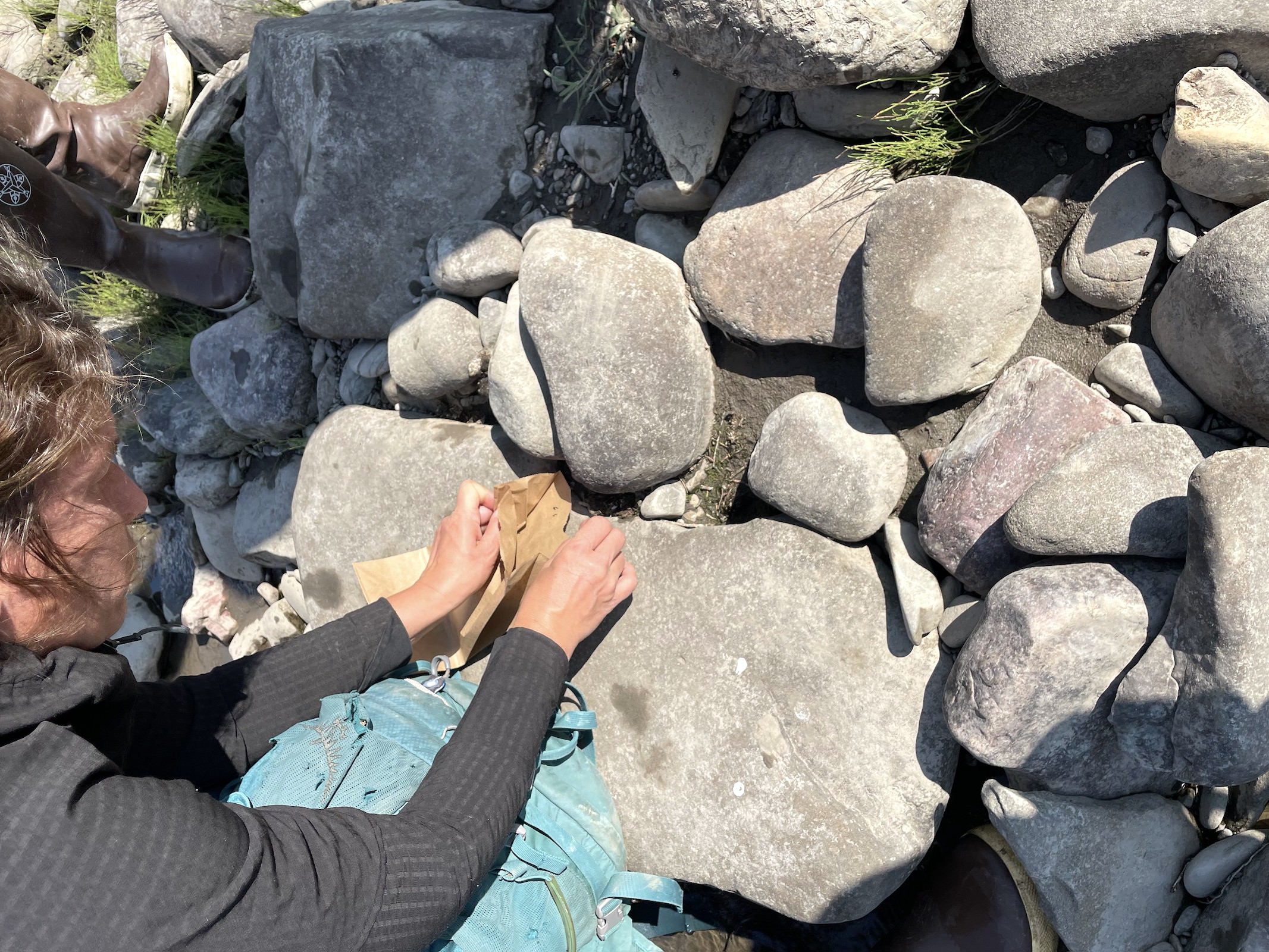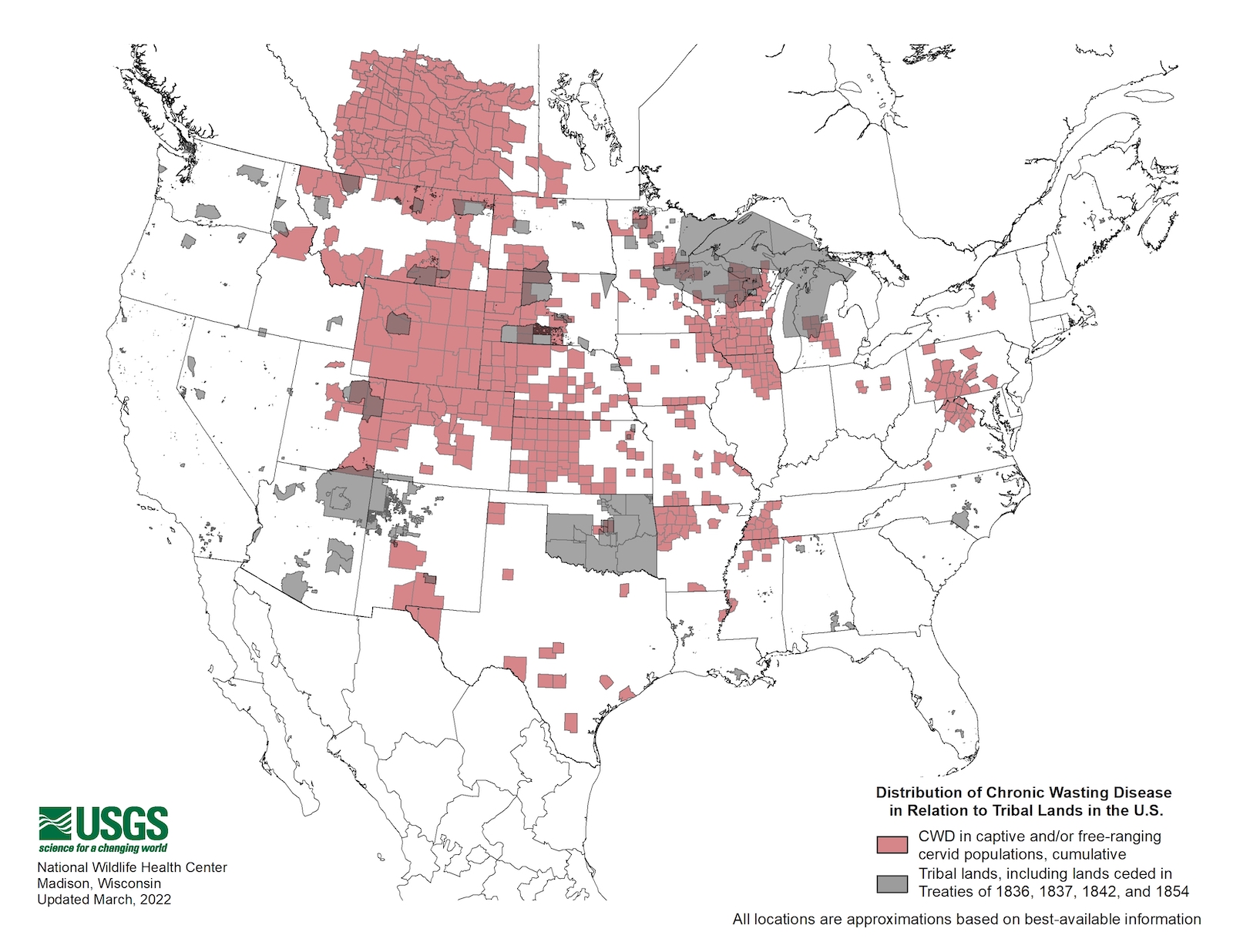“The Leprosy of the Soul in Our Time”: On the European Origins of the “Great Replacement” Theory
/https%3A%2F%2Fdev.lareviewofbooks.org%2Fwp-content%2Fuploads%2F2022%2F08%2FSturmabteilung-unit-in-Nuremberg.jpg)
The Buffalo tragedy, whose wounds have yet to heal, reminds us that words are never just “words.” They are also speech acts. Thus, in addition to their semantic and denotative properties, words also entail perlocutionary effects, pragmatic consequences for human action.
Insight into the nature of ideology — of which conspiracy theories, such as the Great Replacement, are merely a subset — allows us to fathom the causal nexus linking the mystification of political language with political deeds. Theorists of totalitarianism, such as Hannah Arendt, have helpfully clarified the relationship between ideology, as a type of delusional, self-referential credo, and totalizing political systems. In many respects, the dominant political ideologies of the 20th century, Nazism and communism, provided the rhetorical templates or scripts for the unspeakable political depredations that followed.
Similarly, in The Myth of the State (1946), Ernst Cassirer remarked appositely that Nazism’s initial triumph — the breakthrough that served as the precondition for all its future successes — was its transmutation of modern political discourse into the lexicon of political myth. Cassirer claimed that the hallmark of political myth is that the magical use of language takes precedence over its exoteric, communicative function. By mystifying political discourse, ideology and political myth devalue and obscure social transparency; they thus systematically thwart the discursive basis of democratic will-formation, which is the lifeblood and substance of democracy. As Cassirer observes,
If we study our modern political myths […] we find […] not only a transvaluation of all our ethical values but also a transformation of human speech. The magic word takes precedence of the semantic word. […] Nothing is more likely to lull asleep […] our powers of judgment and critical discernment […]
In recent years, we have seen the sanguinary and brutal script that played out in Buffalo repeatedly reenacted. As his role model, the gunman invoked mosque murderer Brenton Tarrant, who in March 2019 massacred 51 Muslim innocents in Christchurch, New Zealand. Parts of the Buffalo slayer’s hate-filled screed were lifted directly from the New Zealand killer’s manifesto, which was titled “The Great Replacement.” In addition, both documents displayed the “Black Sun” (Schwarze Sonne) symbol favored by neo-Nazis and white supremacists, thereby highlighting the ideological pedigree that inspired their heinous deeds.
Sadly, these episodes are part of a much larger configuration. In August 2019, an anti-immigrant zealot murdered 22 people, mostly Latino, at a Walmart store in El Paso, Texas. Prior to committing this gruesome deed, the killer, following the Christchurch murderer’s lead, posted an online manifesto claiming that the “attack [was] a response to the Hispanic invasion of Texas.” “I’m only defending my country,” he continued, “from cultural and ethnic replacement brought on by an invasion.”
Two years earlier, at the infamous “Unite the Right” rally in Charlottesville, Virginia, co-orchestrated by Proud Boys adherent Jason Kessler and alt-right ideologue Richard Spencer, white nationalists staged a torchlight parade that was starkly reminiscent of the SA (Sturmabteilung) processions that, during the early 1930s, accompanied the Nazi seizure of power. Within minutes, the marchers’ chant “You will not replace us!” metamorphosed into “Jews will not replace us!” — thereby underlining the longstanding racial-ideological links between Nazism and the North American white-power movement.
Seeking to fathom the origins of the Great Replacement doctrine that has, internationally, wreaked so much havoc and bloodshed, journalists have repeatedly singled out the French writer Renaud Camus’s Islamophobic diatribe Le Grand Remplacement (2011) as a watershed. Camus has characterized the “Great Replacement” as “the most serious shock that France has experienced since the beginning of its history. If the exchange of peoples and civilizations, which is already so advanced, is brought to completion, the history that follows will no longer be our own.”
In truth, Camus, an inveterate provocateur, was a relative latecomer to replacement ideology, more of a popularizer than an originator. Camus gained a measure of notoriety in 1979 with the publication of Tricks, a gay travelogue prefaced by Roland Barthes, in which the author recounted, in lascivious detail, a series of 25 one-night stands among the world’s thriving homosexual communities during the pre-AIDS era. By contrast, when Le Grand Remplacement was first published 11 years ago, it remained relatively unnoticed.
In explaining the motivations behind his decision to write Le Grand Remplacement, Camus, who describes himself as an “ultra-elitist” and an “aristocrat of the soul,” has sought to drape himself in virtue, portraying himself as a champion of “classical” French values and traditions — which, he contends, “Afro-Asian” immigration has placed at risk. It goes without saying, however, that Camus’s understanding of “French traditions” is woefully selective. He neglects to mention that the republican precepts of liberty, equality, and fraternity — norms that are diametrically opposed to his own racial intolerance — have, since 1789, formed the bedrock of French political culture. Upon closer examination, it is not hard to see that the “values and traditions” that Camus holds dear are those of the European Counterrevolution: a lineage that extends from Joseph de Maistre to Édouard Drumont (author of the 1886 anti-Semitic tract La France juive) to Action Française and the protofascist “ligues” of the 1930s (with their cries of “France for the French!”), all of which paved the way for the ignominies of Vichy.
During the 1930s, counterrevolutionary fearmongering concerning the specter of métissage (racial mixing) and an “immigration invasion” was primarily directed against Jews. It should come as little surprise, therefore, that, in 2000, Camus provoked a public outcry by virtue of an anti-Semitic lapsus that, in retrospect, seems to have been a trial run for his subsequent Great Replacement tirade: an ill-starred attempt on Camus’s part to uphold ethnic purity by denouncing the Jewish contamination of French cultural life.
The point of departure for the controversy was a debate on the topic of ethnic integration that was held on Panorama, a radio broadcast on the France Culture network. In a work of nonfiction, La Campagne de France (2000), Camus denounced the “over-representation of Jewish collaborators” on Panorama, an imbalance that Camus deplored as “exaggerated, misplaced, [and] improper.” Denying that he was an anti-Semite, Camus protested, “I do not find it suitable that a discussion concerning integration that is ‘officially’ prepared and announced on public radio […] would transpire almost exclusively among journalists and intellectuals who are Jewish or of Jewish origin.” “What irritates me about Jews,” added Camus,
is the following: insofar as I feel, with every fiber of my body, a passionate love for the experiences that the French people have endured on French soil over the course of 15 centuries, and for the culture and civilization that have resulted therefrom, it disturbs and saddens me to see, in a great number of cases, a majority of first or second generation French Jews become the principal spokespersons and representatives of those experiences, this culture, and this civilization, in view of the fact that they have not participated directly in these experiences.
Camus’s rant reprised the central arguments of French literary fascism during the 1930s: (1) that French Jews weren’t really French; (2) that Jewish influence was inherently corrosive, hence a primary source of France’s moral decay; (3) and that, consequently, the only way to reverse French decline was, by law or decree, to restrict Jewish cultural and political influence.
Predictably, Camus’s anti-Semitic transgression succeeded in reopening painful wounds from the Vichy era that had not yet entirely healed. Much of the French literary establishment turned against Camus, including his publisher, Editions Fayard, which withdrew La Campagne de France from circulation, leaving Camus embittered and resentful.
In this context, it is worth noting that Le Grand Remplacement is by no means free of anti-Semitic innuendo. In a supplement to the 2012 edition, “Discours d’Orange,” Camus pointedly criticized what he saw as the disproportionate hold over contemporary French cultural memory exercised by the Holocaust, adding that the rituals of Shoah remembrance had directly contributed to France’s cultural decline. Camus alleged that the duties of Holocaust commemoration have abetted the collapse of the French education system, in which “nothing of value is taught.” He denounced Holocaust remembrance for having engendered a political culture of “dogmatic anti-racism”: a worldview that is actively promoted by organizations such as SOS Racisme and LICRA (International League Against Racism and Anti-Semitism). The propagation of fanatical multiculturalism, claimed Camus, has accelerated “communautarisme” (group separatism), or the fragmentation of French society into a congeries of warring ethnicities.
Such overwrought invective provides insight into the judgmental excesses and persistent bad faith of the unhinged polemicist. Instead of investigating the historical circumstances that produced the Shoah, thereby shedding light on the perpetrators’ motivations, Camus preferred to suppress debate by impugning the participants’ motives. Similarly, instead of exploring the proximate causes of racism and the corrosive effect it has had on contemporary French society, Camus favors censuring those who have mustered the civic courage to organize against it — as though by silencing critics of social injustice, one could make the problem itself disappear.
Moreover, from an evidentiary standpoint, Camus’s “population replacement” thesis is demonstrably untenable. Instead, it is little more than a fever dream spawned by the hyperactive far-right political imaginary. A survey of French immigration patterns that was undertaken by Le Monde in 2014 ascertained that the percentage of the French population who were descended from non-European immigrants barely totaled five percent.
All of this suggests that “replacement” doctrine is merely a fashionable, 21st-century political mythologem: a conspiracy theory that, functionally speaking, plays a role similar to that of the Protocols of the Elders of Zion during the early decades of the 20th century. Like other political myths, its effectiveness lies in its capacity to provide a convenient rationalization for deep-seated and widely held prejudice. Replacement theory’s use value derives from its considerable ideological plasticity. Thus, depending on the circumstances, it can be deployed to demonize a wide array of socially vulnerable out-groups: Muslims, Jews, African Americans, and Latinos.
Only in 2015, with the escalation of the Middle East refugee crisis, did Camus’s empirically false claim concerning the “replacement” of “indigenous Europeans” by asylum seekers from the developing world gain a hearing. It was at this point that “population replacement” became a rallying cry and a meme among proponents of the European “identity movement” — Génération identité in France, the Identitäre Bewegung in Germany and Austria — as well as among the leaders of Europe’s increasingly muscular right-wing authoritarian populist parties. As National Front founder and four-time presidential candidate Jean-Marie Le Pen falsely claimed in his 2018 Mémoires: “The Great Replacement is a fact that is recognized by every demographer. […] The white world is perishing […] because of illegal immigration. […] The Great Replacement of our population is accelerating every year.” Similarly, in 2013, Le Pen’s successor and the heir to the family political dynasty, Marine Le Pen, inveighed against the “Great Replacement of population” that was being orchestrated by reigning political elites who, she claimed, had “totally” opened France’s borders.
In April 2014, Camus was convicted by a French court of “incitement to violence and hatred,” and fined €4,000 for slandering Muslims as “thugs” and “soldiers [of Islam]” who are engaged in a struggle of “reverse-colonization,” thus forcing France’s “indigenous inhabitants” to flee their native land. Nevertheless, a year later, Le Pen fille, untroubled by Camus’s rhetorical excesses, warmly welcomed him into SIEL (Souveraineté, identité et libertés), a National Front affiliate.
The French presidential elections of April 2022 offered striking evidence of the “mainstreaming” of Camus’s Great Replacement ideologeme — and, hence, of the extent to which, in the eyes of the French public, rhetorical hyperbole had effectively supplanted reality. Among French journalists, a candidate’s attitude toward Camus’s inflammatory catchphrase became the de facto litmus test of whether they were “soft” or “firm” on immigration — and, by extension, whether they could be trusted to “rein in” France’s 5.7 million Muslims. Indicative of the far-reaching and alarming rightward shift of French political culture was the candidacy of far-right pundit Éric Zemmour, who outflanked Marine Le Pen to the right and who, in recent years, has been France’s most outspoken champion of replacement theory. Despite his late declaration of candidacy, Zemmour finished fourth in the voting, surpassing the center-left Socialists and center-right Republicans.
¤
Beyond the French borders, the idiolect of “population replacement” has been profligately brandished by Hungarian strongman and self-professed champion of “illiberal democracy” Viktor Orbán. Speaking at a 2019 conference on demographic change in Budapest, Orbán, echoing Camus’s misleading claims, prophesied:
If Europe is not going to be populated by Europeans in the future and we take this as given, then we are speaking about an exchange of populations, to replace the population of Europeans with others. There are political forces in Europe who want a replacement of population for ideological or other reasons.
Former Trump ventriloquist Steve Bannon once aptly described Orbán as “Trump before Trump.”
It speaks volumes that Orbán has become the new darling of the American right: former mainstream conservatives who, inspired by the success of Trump’s authoritarian populism, have seemingly given up on the Bill of Rights, rule of law, separation of powers, and so forth. Right-wing conservatives have eagerly embraced Orbán’s brand of illiberal democracy as a political bulwark against the perils of “cultural disintegration” — i.e., support for abortion rights, gay marriage, and the Black Lives Matter movement — fomented by “secular liberalism.” As American Conservative blogger Rod Dreher told a New York Times journalist in fall 2021, “[W]e’re at a point now where we have such cultural disintegration in the U.S. that the choice might actually be between an illiberal democracy of the left or an illiberal democracy of the right.” Significantly, this year’s annual Conservative Political Action Conference, which is usually held in Washington, DC, was moved to Budapest.
Last August, in a gesture of ideological solidarity, Tucker Carlson Tonight — which, with three million nightly viewers, is the most watched evening program on Fox News — broadcast for a week from Budapest. The highlight was undoubtedly an on-air tête-à-tête with Orbán himself (an interview brokered by none other than Dreher, who, at the time, was in Budapest to study the methods of Orbán’s 2010 Machtergreifung).
The theme of “population replacement” has been a staple of Carlson’s nightly anti-immigrant harangues since he joined Fox’s prime time lineup in 2016. In a September 2021 diatribe, Carlson alleged that the reason that the Biden administration has refused to end illegal immigration is that it wants to “change the racial mix of the country” by “dramatically [increasing] the proportion of Americans newly arrived from the Third World.” This policy, Carlson fulminated, is “called the great replacement — the replacement of legacy Americans with more obedient people from faraway countries.” According to one recent report, Carlson has returned to this theme in over 400 broadcasts.
¤
Since the Great Replacement has become the defining far-right shibboleth or “big lie” of our time, it is worth reviewing the term’s intellectual genealogy. At the height of the Dreyfus affair (1894–1906), Maurice Barrès, a fervent anti-Dreyfusard and, along with Action Française founder Charles Maurras, a progenitor of Integral Nationalism, warned that demographic change, mainly in the form of Jewish immigration, portended the death of French civilization. Hence, in L’Appel au soldat (1900), Barrès lamented, “Today, new citizens […] have insinuated themselves among us. […] Their triumph means the ruination of our nation. […] Although France might still be called France, its soul will be dead — eviscerated and destroyed.”
Replacement theory as we know it today, however, effectively took shape among a coterie of neofascist intellectuals who, following World War II, realized that, for fascism to survive, it required an ideological makeover. Among this group, the most influential figure was Maurice Bardèche (1907–98), the brother-in-law of executed collaborationist scribe Robert Brasillach and a man who has been characterized as “le plus fasciste des français.” Bardèche was the author of Nuremberg or the Promised Land (1948), which contested the existence of the Nazi death camps and denigrated the Allied War Crimes Tribunal as an “African kangaroo court” (“une assemblée de rois nègres”). Having concluded that absolving Nazism of responsibility for Auschwitz and related atrocities was a necessary first step in restoring fascism’s political legitimacy, Bardèche established himself as one of the pioneers of international Holocaust denial. In this way, the so-called “Auschwitz lie” was born.
Replacement ideology, as it emerged during the 1950s and ’60s, was conceived by a clique of neofascist militants in response to the shift in the global balance of power heralded by decolonization, which the European far right viewed as an unacceptable threat to the West’s longstanding hegemony over the developing world. In their eyes, anticolonialism, by challenging white supremacy, augured a historical role reversal between “masters” and “slaves” — a transformation of the racial balance of power that Bardèche and his cronies viewed as insupportable. In France, the anticolonial revolts that punctuated the postwar era came as an especially severe blow, since the Gallic “civilizing mission” had long been viewed as an immense source of national pride. Needless to say, from the standpoint of those who were colonized, the “glories” of French colonialism were perceived and experienced very differently.
A turning point in the development of replacement doctrine was the publication of Bardèche’s article “Racism: The Unknown” in Défense de l’Occident (Defense of the West), a journal that Bardèche founded in 1952 to disseminate his “negationist” historical views. (Bardèche’s title alluded to one of the central texts of French race thinking, Alexis Carrel’s Man, the Unknown, which appeared in 1935.) To further this goal, Bardèche opened the pages of Défense de l’Occident to the leading French champions of Holocaust denial, such as Paul Rassinier and Robert Faurisson.
Bardèche published “Racism: The Unknown” in 1960, immediately following the Congo’s successful struggle for independence against Belgium and — closer to home — as French colonial rule over Algeria was on the verge of collapse. Six years earlier, in what was at the time French Indochina, France had suffered a crushing defeat at the hands of Ho Chi Minh and the Viet Minh at Dien Bien Phu. Bardèche seized on the upsurge of antiwhite sentiment that marked these bitter and prolonged anticolonial struggles to condemn liberal antiracism as “race treason” and to rehabilitate colonial racial hatred as a form of défense légitime.
In “Racism: The Unknown,” Bardèche’s unholy coup — his precedent-setting “masterstroke” — was to reverse the terms between perpetrators and victims, colonizers and colonized. Bardèche fabricated the myth that Africans were the real racists while white Europeans were the innocent targets of their violent, uncontrollable rage. Since the Africans’ antiwhite animus was, purportedly, unbridled, it was only a matter of time before they transposed their savagery to the metropole. Hence, Bardèche argued that, following their expulsion of the colonizers, they were bound to vent their animosities upon Europe itself. Consequently, in “Racism: The Unknown,” Bardèche portrayed decolonization as the prelude to an imminent global race war:
The white race is no longer engaged in a fight for economic or political predominance, it is fighting for biological survival. […] Before long, it will cease to be the capitalists and proletarians who battle over the world’s riches, it will be the whites — capitalists and proletarians in unison — who will have to defend themselves, as a minority race, against this planetary invasion.
Thus, it was Bardèche who succeeded in popularizing the specter of “counter-colonization,” sowing the fear that Europe’s former colonial subjects, under the sway of a militant Third-Worldism, would rise up to enslave their former colonial masters.
Bardèche’s fearmongering — his portrayal of an impending “white genocide” — was a watershed in the evolution of replacement theory. The popularity of Camus’s Great Replacement trope, which has become integral to the global self-understanding of contemporary white nationalists, is incomprehensible apart from this background.
Another of Bardèche’s intellectual progeny was the writer Jean Raspail, whose 1973 novel The Camp of the Saints presented a dystopian vision of a defenseless Europe besieged by a flotilla of revenge-minded, poverty-stricken Third World refugees. In Raspail’s prurient and graphic account, the asylum-seekers are portrayed as a malevolent force of nature: a teeming, indistinguishable, oversexualized mass. Thereby, they are divested of the last recognizable vestiges of humanity:
[E]verywhere, a mass of hands and mouths, of phalluses and rumps. White tunics billowing over fondling, exploring fingers. Young boys, passed from hand to hand. Young girls, barely ripe, lying together cheek to thigh, asleep in a languid maze of arms, and legs […] Everywhere, rivers of sperm. Streaming over bodies, oozing between breasts, and buttocks, and thighs, and lips, and fingers. Bodies together, not in twos, but in threes, in fours, whole families of flesh gripped in gentle frenzies and subtle raptures.
According to Le Monde, Michel Houellebecq’s 2015 succès de scandale, Submission, in which French political elites spinelessly acquiesce in the face of an Islamic takeover, was inspired by conversations the author had with Raspail.
In North America, the English translation of Raspail’s dystopian fable became one of the foundational texts of the burgeoning white separatist movement. During his pre-Trump stint as editor-in-chief of Breitbart News, Steve Bannon frequently invoked The Camp of the Saints, treating its apocalyptical immigrant-invasion scenario as factual rather than as a malign, xenophobic work of fiction. In October 2015, Bannon described the Middle East refugee crisis as “almost a Camp of the Saint-type invasion into Central and then Western and Northern Europe.” In 2018, alt-right demagogue Richard Spencer praised The Camp of the Saints as “highly original” and granted it evidentiary status as “a distillation and condensation of observable reality.” American Conservative journalist Dreher, after perfunctorily conceding that Raspail’s novel was “aesthetically and morally” flawed, could barely contain his enthusiasm. Raspail’s “cultural diagnosis,” Dreher gushed, contains “important truths […] especially when it comes to the way progressive ideology in the European establishment institutions (state, church, media, academia) disarms people in the face of a hostile and alien culture.”
Dreher’s pronunciamiento remained faithful to the conservative rule of thumb: whenever the right has been compromised and is at risk of losing face, find a “progressive” to blame.
Among white nationalists and militia enthusiasts, Raspail’s text has often been read in tandem with William L. Pierce’s The Turner Diaries (1978), whose plot is also driven by anxieties about “white extinction.” The centerpiece of Pierce’s novel is an Armageddon-like race war in which white supremacists, after obtaining nuclear weapons, overthrow the federal government — which, in white-nationalist parlance, is known as Zionist Occupation Government or “ZOG.” The Turner Diaries culminates in an orgy of bloodletting known as the “Day of the Rope,” in which the Aryan protagonists avenge themselves on their racial enemies: Blacks, Jews, and so-called “race traitors.”
The novel — which doubles as a “how to” manual for would-be terrorists — provided the template for the 1995 Oklahoma City bombing, the deadliest domestic terrorist attack in American history, in which 168 innocents were murdered. Perpetrator Timothy McVeigh frequently sold copies of The Turner Diaries at gun shows, and pages from the novel were discovered in McVeigh’s possession when he was arrested. Turner Diaries iconography also featured prominently during the January 6, 2021, attack on the Capitol, which was organized and carried out by a motley coalition of white nationalists and conspiracy theorists: the Proud Boys (“Stand back and stand by!”), the Oath Keepers, and QAnon diehards.
In “Racism: The Unknown” and related texts, Bardèche outlined a credo that would inspire and guide white nationalists for decades to come. He thereby established a fateful intellectual precedent that foreshadowed Camus’s Great Replacement meme and helped pave the way for its numerous imitators and admirers. Equally important, Bardèche — who, during the 1930s, was a regular contributor to protofascist journals such as L’Étudiant français, La Revue universelle, and Je suis partout — acted as the intermediary between two generations of fascist militants: the 1930s generation, which was dominated by an influential coterie of neo-Maurrasians who, as the European crisis worsened, increasingly embraced the idea of establishing a fascisme à la française; and the postwar mélange of neofascists, “Third Positionists,” and Holocaust deniers, who, following the loss of French Algeria, coalesced around the topos of a “Gramscism of the right” — an all-out “metapolitical” struggle to vanquish the ideological hegemony of the political left.
In his 1960 book Qu’est-ce que le fascisme? — a text that reaccredited fascism in the eyes of a new generation of far-right activists and extremists — Bardèche, anticipating the xenophobic delirium of Camp of the Saints, revisited the specter of “immigration inundation” — a development that portended “white genocide” and that Bardèche decried hyperbolically as “the leprosy of the soul in our time.” To forestall this prospect, Europe needed to become a “fortress.” Yet, according to Bardèche, it more closely resembled an unguarded “steppe.” The West’s lack of preparedness, Bardèche insisted, was tantamount to racial suicide:
All the filth other people want to expel has the right to settle on the steppe, to make noise, to make law, and to mix Negroid dreams, the stench of witchcraft, cannibal nightmares with our blood. […] The appearance of an adulterous race within a nation is the modern form of genocide […] the leprosy of the soul in our time.
One of the most notorious and vicious exponents of replacement ideology was the self-styled “Knight Templar” Anders Behring Breivik, who, on July 22, 2011, massacred 77 persons in Oslo and Utøya, Norway. In the online manifesto he posted the morning of his attack, Breivik claimed that Europe was experiencing a “tidal wave” of “Islamization” and that, once the cycle of “population replacement” had terminated, Europe would metastasize into Eurabia: Sharia would become the law of the land and “indigenous” Nordic Europeans, like Breivik himself, would be relegated to minority status. Both the Christchurch mosque murderer Brenton Tarrant and the recent Buffalo shooter explicitly acknowledged Breivik’s precedent as the template for their own heinous deeds.
As a theorist of racial hatred and “white extinction,” Bardèche’s originality — and the key to his success — was twofold: he separated the idea of Aryan supremacy from its roots in National Socialism, and he misleadingly portrayed Europeans as blameless “victims” of an increasingly virulent antiwhite racism. By reversing the relationship between oppressor and oppressed, Bardèche sought to deprive those who were truly abused and exploited — the non-European peoples who had been subjected to the wanton brutality of colonialism — of their status as victims. By elevating the mythologem of “white extinction” to the status of a legitimate political topos, Bardèche reconceived the discourse of race thinking in an idiolect that made it seem, in the eyes of many, reasonable and acceptable again.
¤
Richard Wolin teaches history, political science, and comparative literature at the Graduate Center of the City University of New York. His new book, Heidegger in Ruins: Between Philosophy and Ideology, is forthcoming with Yale University Press.
¤
/https%3A%2F%2Fdev.lareviewofbooks.org%2Fwp-content%2Fuploads%2F2021%2F07%2FPartenHofstadter.png)
/https%3A%2F%2Fdev.lareviewofbooks.org%2Fwp-content%2Fuploads%2F2021%2F07%2Fstopthesteal.png)















